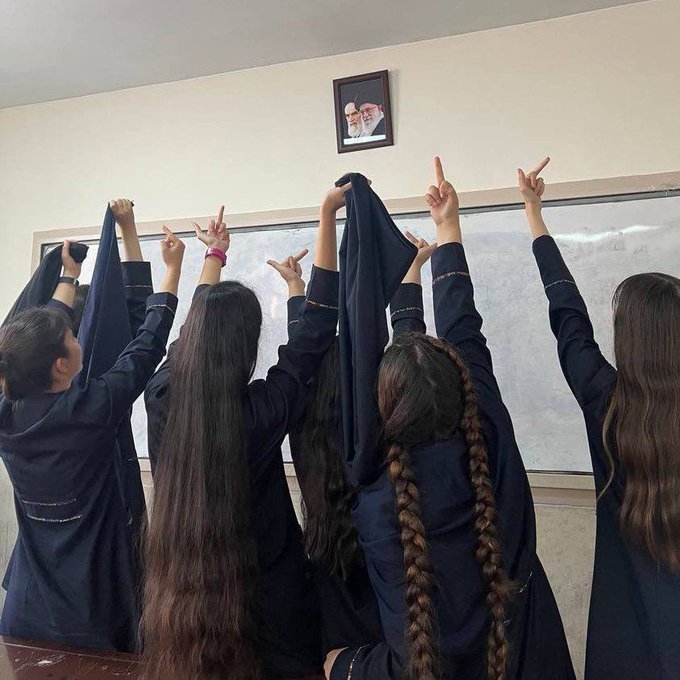"Death to the dictator!": Iranian schoolgirls' chants
As the protest entered its fourth week, Iran has tightened its crackdown, rounding up protesters and supporters. But this has done nothing to curb the growing dissatisfaction among women.
Total Views |
Tehran, Oct 06: At the funeral of 22-year-old Mahsa Amini, who died after being detained by Iran’s morality police, women took off their headscarves in protest against Iran’s forced hijab law. This was just the beginning of unprecedented protests that the country witnessed in the next three weeks. And now, in a show of defiance, young schoolgirls have taken up the battle amid a crackdown by security forces.

As the protest entered its fourth week, Iran has tightened its crackdown, rounding up protesters and supporters. But this has done nothing to curb the growing dissatisfaction among women. The fight on the streets has now gone beyond the death of a 22-year-old girl. The fight is now for freedom, the fight is now for choice.
And schoolgirls in Iran are not far behind in adding their voices to the growing demand for freedom. A video from a school in Karaja, west of Tehran, showed a group of bare-headed girls chanting “Death to the dictator” in reference to supreme leader Ayatollah Ali Khamenei. The girls are seen chasing a man, reportedly the principal, out of a school. At least 92 protesters have been killed during the protest, according to the Oslo-based group Iran Human Rights (IHR). The government has tried to choke off the protest, but with little success so far. Nika Shakarami, 17, was among the thousands who took to the streets protesting against the death of Mahsa Amini. She was missing for 10 days before her body was handed over to her family. Nika Shakarami's nose was smashed, and her skull pounded. The 17-year-old is among the many killed in a police crackdown on women-led protests across the Islamic Republic. Rather than act as a warning to the agitators, the death of the 17-year-old girl has added a spark to the protest.
The protests have expanded into a call for broader changes, with the morality police being just the tip of the iceberg. Women burning their headscarves, cutting their hair, or making a flag out of hair, are just some of the defining images that have come out of the ongoing demonstrations in Iran. However, the implication of burning the headscarf goes beyond just the rigid dress code.


